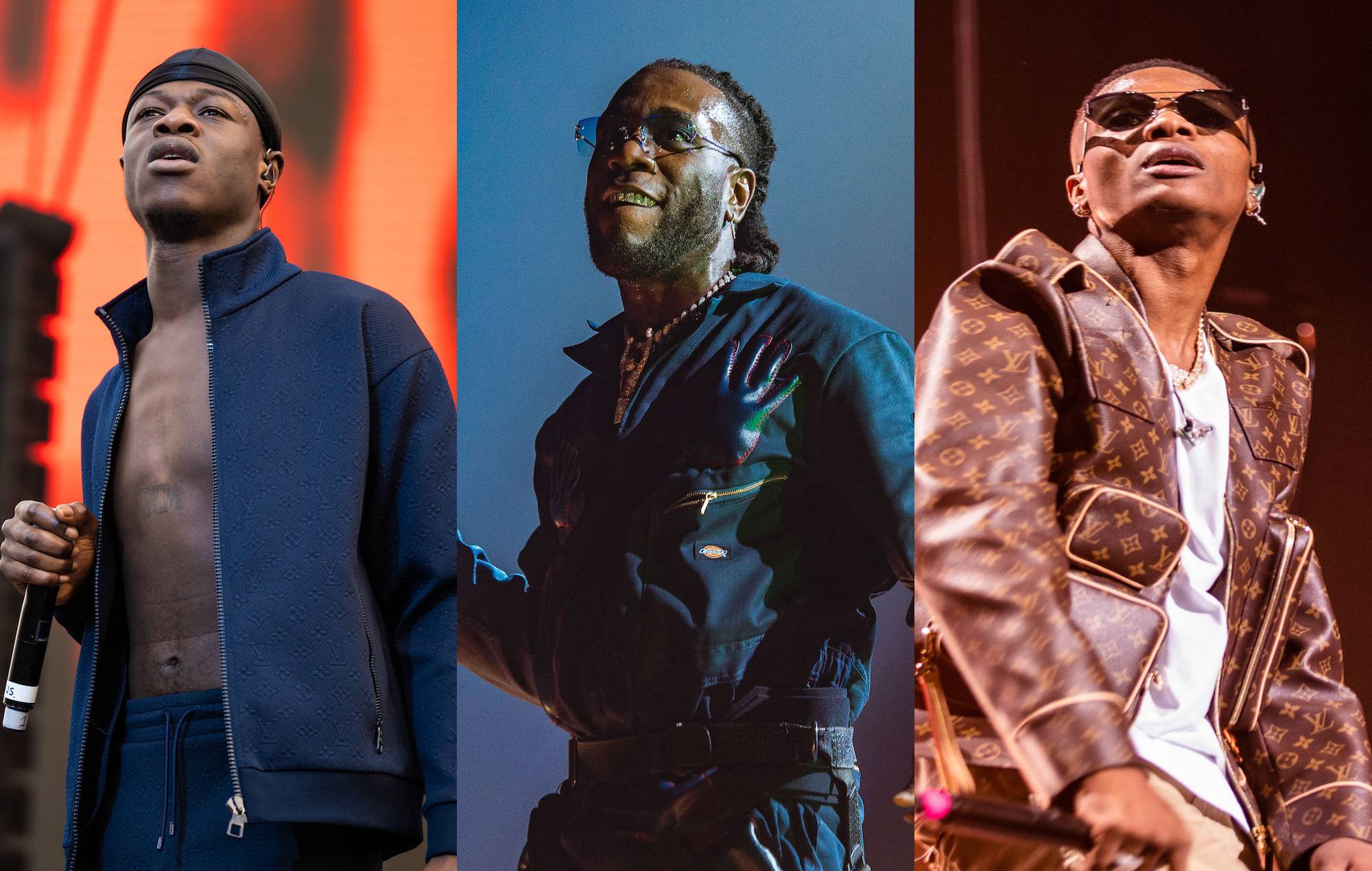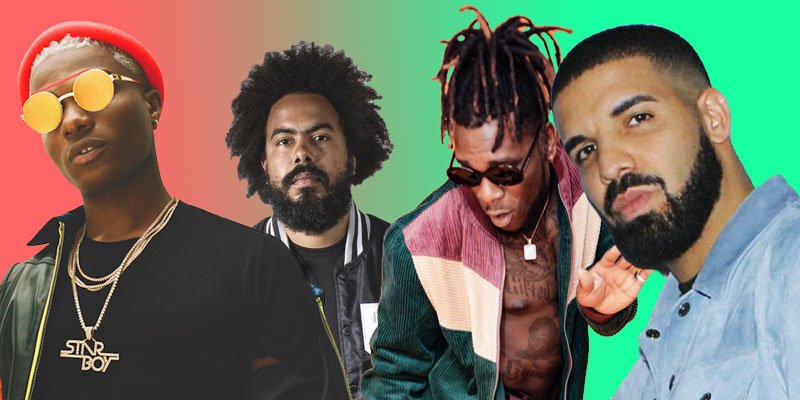WORLDWIDE TAKEOVER – AFROBEATS IS KING
Everybody knows Afrobeats now. Artists are topping charts in every region, holding tours in every major city of the world, and selling out high-profile venues in the US and the UK. Afrobeats stars are now household names the world over, from TikTok virality to albums winning Grammys, it isn’t overhyping to say that Afrobeats has taken a seat at the top musical genres in the world. It hasn’t always been like this though, Nigerian/African music hasn’t always had white people singing and crying to songs sung in Yoruba, about 30 years ago Afrobeats was like crude oil deep in the ground; undiscovered, raw, but potentially highly profitable and with the power to change the world.
The story of Afrobeats will always start with Fela. Fela Kuti is famed for creating Afrobeat when he and his music crew blended a sound from Ghana called hiplife, with jazz which they had learned from schooling in the United Kingdom, and funk from America. The new sound, characterised by two kicks and the famous 5 beat pattern, is in itself very simple and pure, easy to flow with and dance to. Coupled with Fela’s political activism with his music and the sonorous melody of the music he was making, Afrobeat became widely popular. Fela and his crew were the inspiration for everybody else that came after, and it didn’t take long for people to. Africans are melodious people, we like to sing and dance no matter where we are, this was very evident in the 90s when the youths who had left the country tried to recreate music across their shores, especially the Nigerians with inspiration from baba Fela. The Yoruba music genre “fuji” was on the rise and it inadvertently helped Afrobeat evolve. Names like Ayo Shonaiya and DJ Abbass in the UK and Keke Ogungbe and Dayo Adeneye in the US were beginning to pioneer the new generation of Nigerian musicians. The growth wasn’t just outside the shores of Africa, young men and women in Nigeria were gearing up too. Soon connections started to form, like an amazing miracle of chance where hard work meets luck, the singers and rappers began to meet the producers and show organisers.

Keke Ogungbe and Dayo Adeneye, aka Kenny and D1 were best friends who had schooled in the US and lived in the Hollywood area. There they saw how entertainment affected the value of life and society. At that time technology had begun to swim across the ocean and into Nigeria. After the transition into democratic rule in 1999, private individuals and companies were allowed to own media and one Raymond Dokpesi got his hands on one. He visited the US and met Kenny and D1. The duo saw a chance to quite literally bring Hollywood to Nigeria. It would take time and effort, but one just needed to start, they knew Nigerians liked good things. Their pitch worked and in no time they were in Nigeria running AIT and Raypower radio, bringing a chance for Nigerians in Nigeria to see entertainment, but most importantly, to create.
In the UK, Ayo Shonaiya had finished his law education, and with no intention of wearing a wig and gown in court went into his prefered line of entertainment law. He also began to make documentaries and because of his love for fuji music, he wanted to show the behind-the-scenes side of making fuji music. He got his break with K1 The ultimate, a very famous fuji musician who after some work took Ayo on as his manager. Thus began a cascade that would lead Ayo Shonaiya to help begin an African music revolution from the UK. A Nigerian lawyer and agent had gotten his hands on a TV licence and contacted Ayo Shonaiya to help run and fill some air time. Ayo decided to fill it with music. He contacted an old friend, DJ Abbass who together began a show called Intro on which Nigerian musicians were interviewed and their music played. This show aired on Sky, a famous British satellite TV package and this enabled Nigerian music to be broadcast all over the world. The Afrobeat songs that were being made at the time received their first major platform for world dominance.

At this time in the early 2000s, the music scene outside of Nigeria and that within Nigeria began to grow and converge, until eventually, the stars outside Nigeria began to return home. In Nigeria, a trifecta of music groups which would spearhead the Afrobeat movement formed and arose. The Remedies were formed with Eedris Abdulkareem who had for the previous 6 months slept under a bridge in Lagos after moving from Kano, Eddy Remedy, and Tony Tetuila who joined a short while after the main duo was formed right at the Raypower studio where Keke and D1 worked. In Kaduna, young rapper Eldee was developing and after moving to Lagos for his University education formed The Trybesmen with KB who he’d known from school in Kaduna, and while in school they added rapper Freestyle. In Enugu, while in school, 2 young men with the stage names 2face and blackface formed Platashun boys, they were later joined by Faze to complete the trio. This trifecta, something you can call the holy trinity, set the next decade of Nigerian music ablaze with hits after hits, all based on the 5 beat pattern of Afrobeat. The Remedies came to be managed by Ayo Shonaiya who was also meeting some outstanding talents abroad. At that time in the UK musicians with Nigerian heritage had begun to prop up in numbers and they made music with a certain Africaness. One such artist was JJC who because of this had to leave his own group to form the 419 crew. This musical crew consisted of as many as 20 performers at a time. JJC’s goal was to make Nigerian music, music in his language, with the African vibe, so we tried to get as many others together. This verve to make music, along with Ayo Shonaiya and DJ Abbass’ drive to promote the music, led to many shows where Nigerians performed. JJC and his crew performed at such shows and that was where D’banj and Don Jazzy got their break.
After a short few years, more artists had come up in Nigeria; Psquare, Nigga raw, Lord of Ajasa, the foremost. While some of the groups broke up to have solo acts, the trybesmen grew to bring in other artists like Dr Sid and female rapper Sasha P. To make music these guys needed producers, and the number and quality of producers also began to rise; the now late producer OJB jezerel became somewhat of a huge pipe for a lot of good in the music industry to pass through. Others like ID cabasa came up and subsequently acts like Sarz, Shizzi and a few others emerged. The TV stations needed videos as TVs were in more and more households, this created a space for music directors and at first, it was Uzodinma Okpechi and Shina Adedeji, then came Dj Tee, then his protegee Clarence Peters, there was also Patrick Elis. As the scene in Nigeria grew, that in the diaspora also grew and soon they converged in Nigeria with the return of the diasporan acts to Nigeria. The likes of Don Jazzy now famous for his production skills and D’banj were joined by acts like Banky W, Sauce Kid, Kas, Tiwa Savage and a host of others. Nigeria was now awash with afrobeat sounds on the streets, on the radio, on screens, and also in the children growing up. The music scene at that time solidified Afrobeat in Nigeria and other parts of the world as a huge phenomenon, and the new kids would make it a mercurial symbol. Amongst those hugely talented children were a few quite notable names; Wizkid, Davido, Olamide and Burnaboy. For many young fans, it would seem that it all started with this class of Afrobeat musicians, but it didn’t. At this stage, “Afrobeats” had even been carved from Afrobeat as a subgenre that signified a mixture of Afrobeat and another genre. Afrobeats being like a child to Afrobeat took Nigeria and African music at large to another stratosphere.
Now, Nigerian artists are winning grammy awards with Afrobeat albums. The 5 beat pattern is recognised everywhere. Footballers from even non-English speaking countries post workout videos or videos of the dressing room and fans find an Afrobeats song playing from the speakers. It is a worldwide phenomenon, a sign of how strongly Africans can affect the world by developing and sharing our deep love for happiness.



